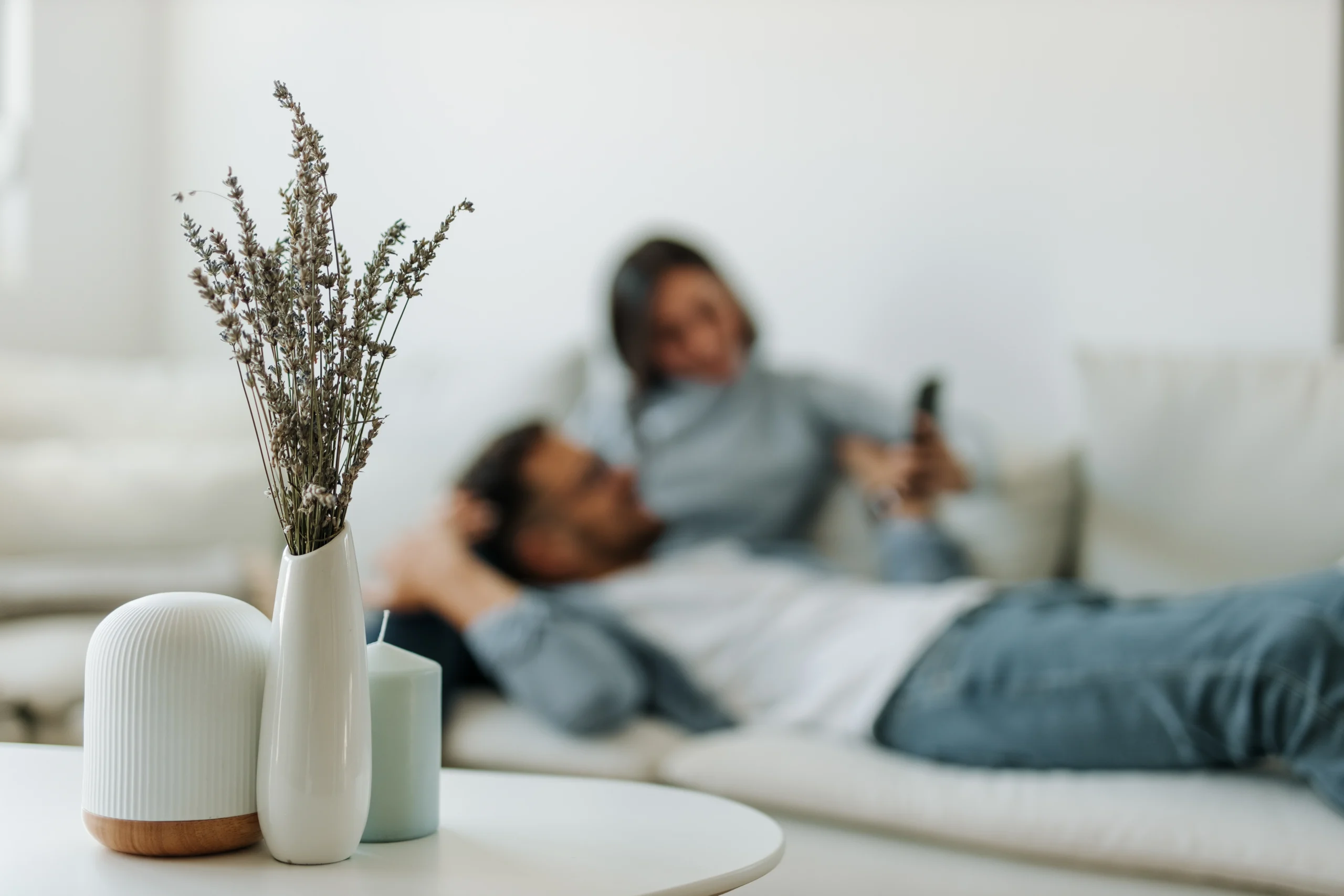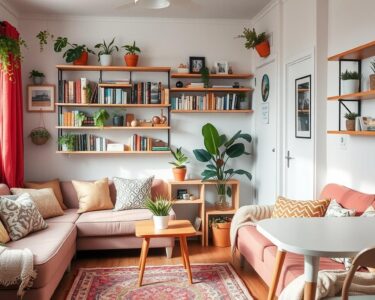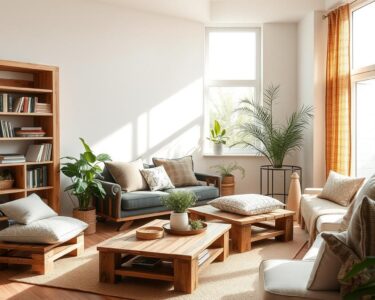Key Takeaway: Transform your home into a peaceful sanctuary without breaking the bank by focusing on mindful organization, natural elements, and simple DIY solutions that promote tranquility.
Table of Contents
Have you ever walked into someone’s home and instantly felt your shoulders drop, your breathing slow, and your mind quiet? That feeling of immediate peace isn’t just luck – it’s by design. And here’s the good news: creating that same serene atmosphere in your own space doesn’t require a designer budget or expensive renovations.
As someone who transformed my cramped city apartment into a calm oasis while barely touching my savings, I can tell you that the secret lies in smart choices and creative solutions. Let’s explore eight proven ways to craft your perfect peaceful retreat without emptying your wallet.
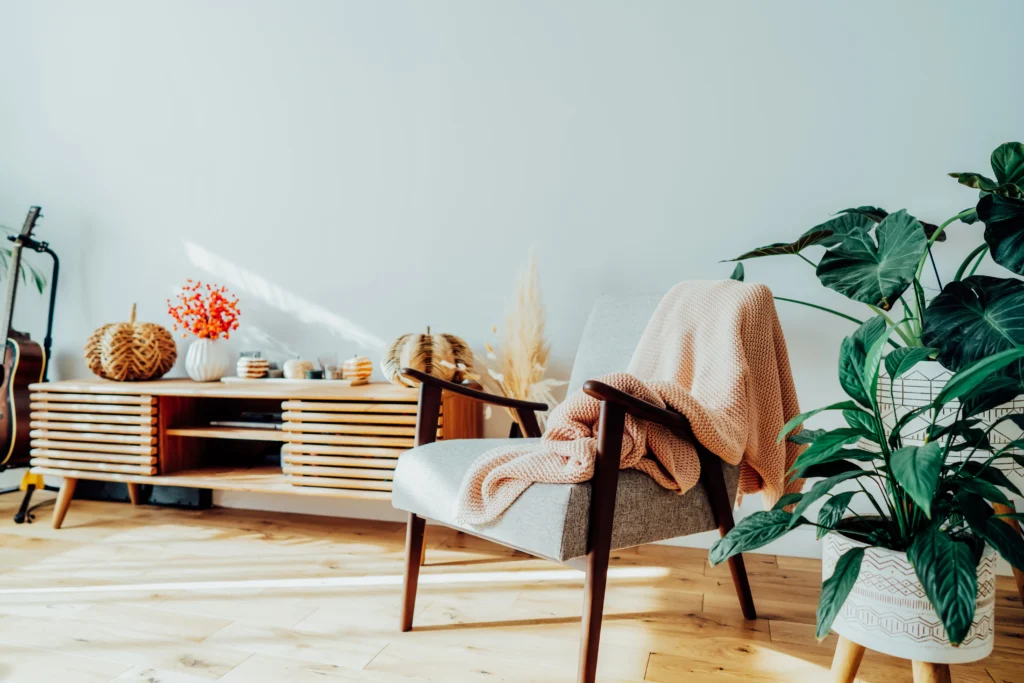
1. Declutter with Purpose: The Foundation of Calm
Nothing creates mental chaos quite like physical clutter. The connection between a tidy space and mental wellbeing isn’t just intuitive – it’s backed by science. Research from Princeton University found that physical clutter competes for your attention, leading to decreased performance and increased stress.
Here’s how to declutter effectively on a budget:
- Start with the “Box Method”: Grab three boxes labeled “Keep,” “Donate,” and “Store.” This zero-cost organization method helps make quick decisions.
- Practice the “One In, One Out” Rule: For every new item you bring home, remove one existing item.
- Create “Zones”: Designate specific areas for different activities, using what you already own to define spaces.
Pro Tip: Before buying storage solutions, look around your home for items that can be repurposed. That old basket? Perfect for corralling throw blankets.
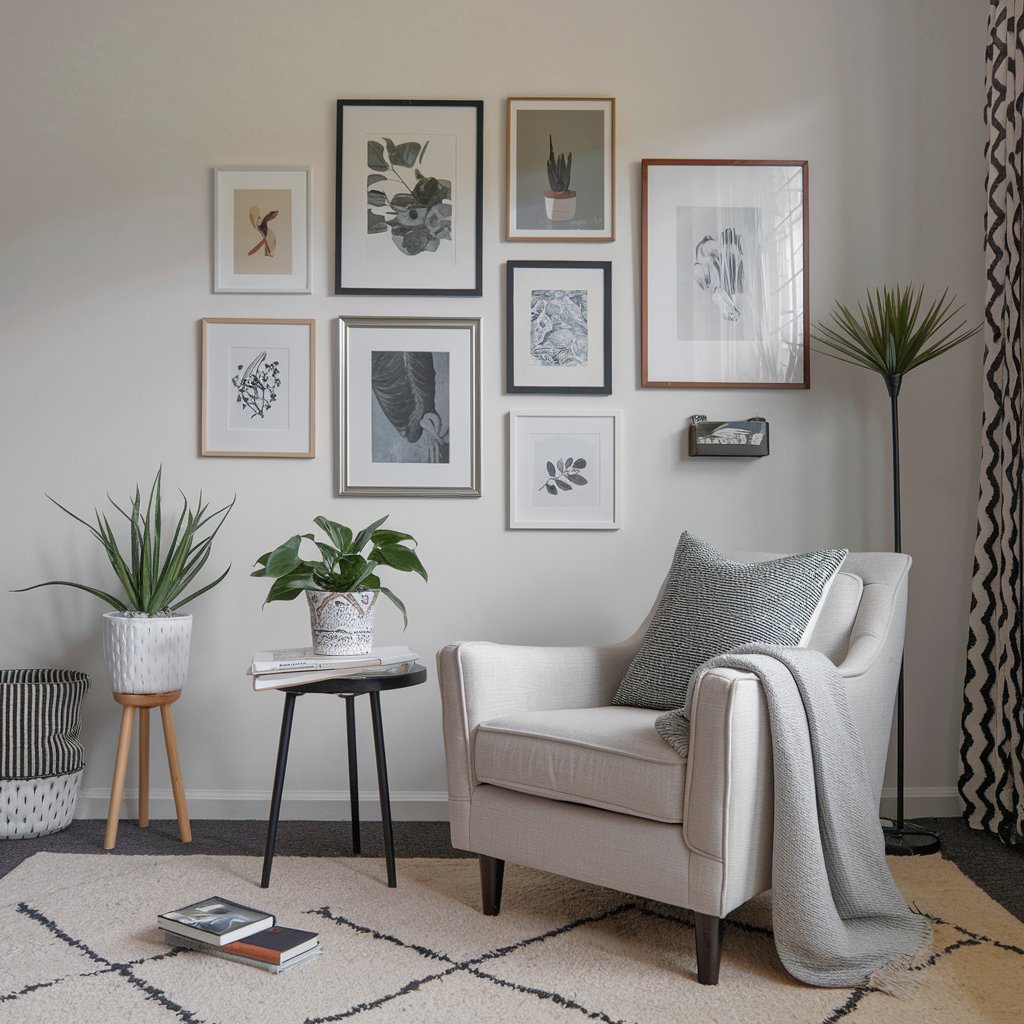
2. Harness the Power of Natural Light
Natural light isn’t just free – it’s a powerful mood enhancer. A study in the Journal of Environmental Psychology found that exposure to natural light significantly reduces stress and anxiety.
Budget-friendly ways to maximize natural light:
- Rearrange furniture to avoid blocking windows
- Clean windows thoroughly (mix vinegar and water for a cheap, effective cleaner)
- Use mirrors strategically to reflect light
- Replace heavy curtains with sheer fabrics from discount stores
For more tips on improving your space for better sleep and relaxation, check out our guide on 5 Simple Changes to Improve Your Sleep Quality for Free.
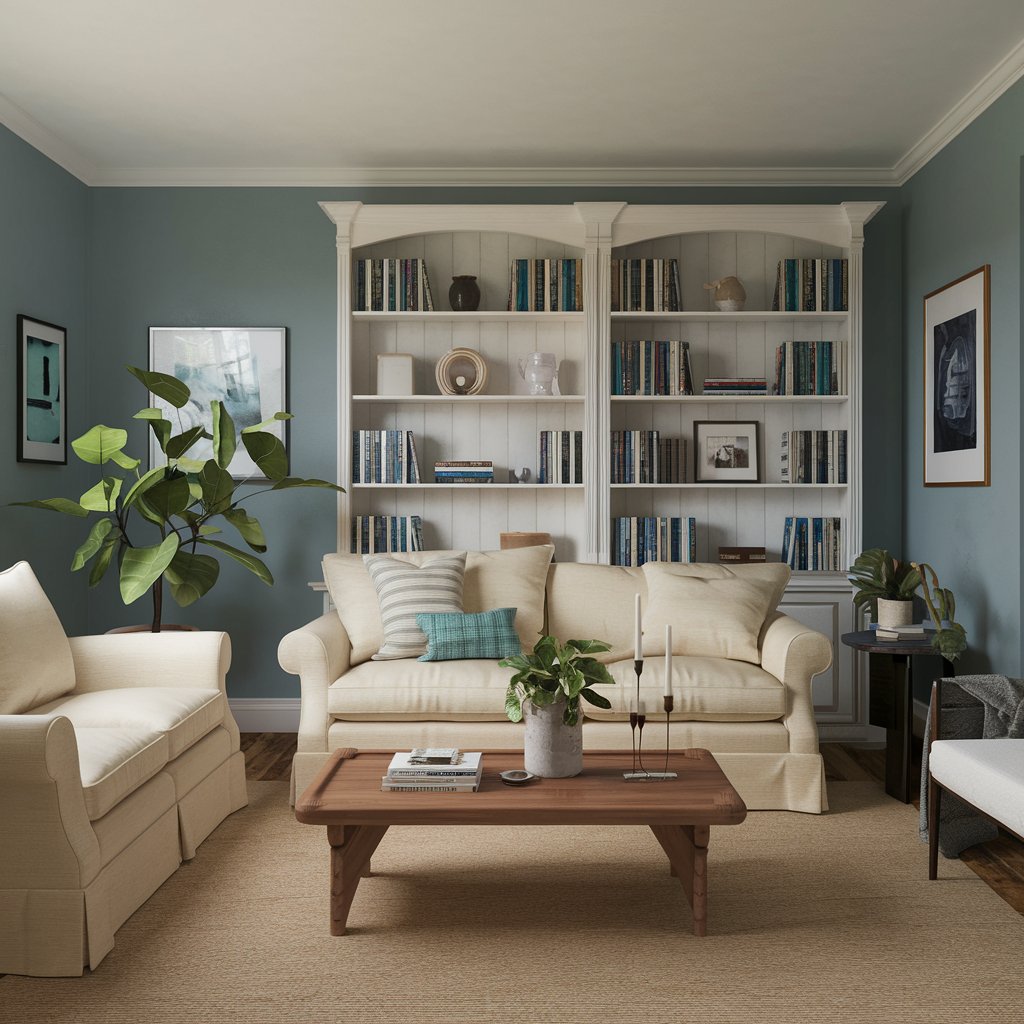
3. Bring Nature Indoors
Creating a connection with nature, or “biophilia,” can reduce stress and improve air quality. Here’s how to do it affordably:
- Start a Propagation Station
- Root cuttings from friends’ plants
- Use clear glass jars you already own
- Join local plant swap groups
- Create a DIY Terrarium
- Use empty jars or containers
- Collect small stones from outside
- Add affordable small plants like moss or succulents
- Gather Natural Decorations
- Collect pinecones, branches, or stones
- Display seasonal finds in glass containers
- Press leaves or flowers for wall art

4. Master the Art of Mood Lighting
Lighting can make or break a room’s atmosphere. While high-end lighting fixtures are beautiful, there are plenty of budget alternatives:
- DIY Mason Jar Lights: Transform old jars into charming luminaries
- String Lights: Create ambiance for under $10
- Strategic Lamp Placement: Use existing lamps at different heights
- Candle Clusters: Group affordable pillar candles for impact
Looking for more ways to enhance your space for relaxation? Explore our article on 6 Ways to Enhance Your Meditation Practice.
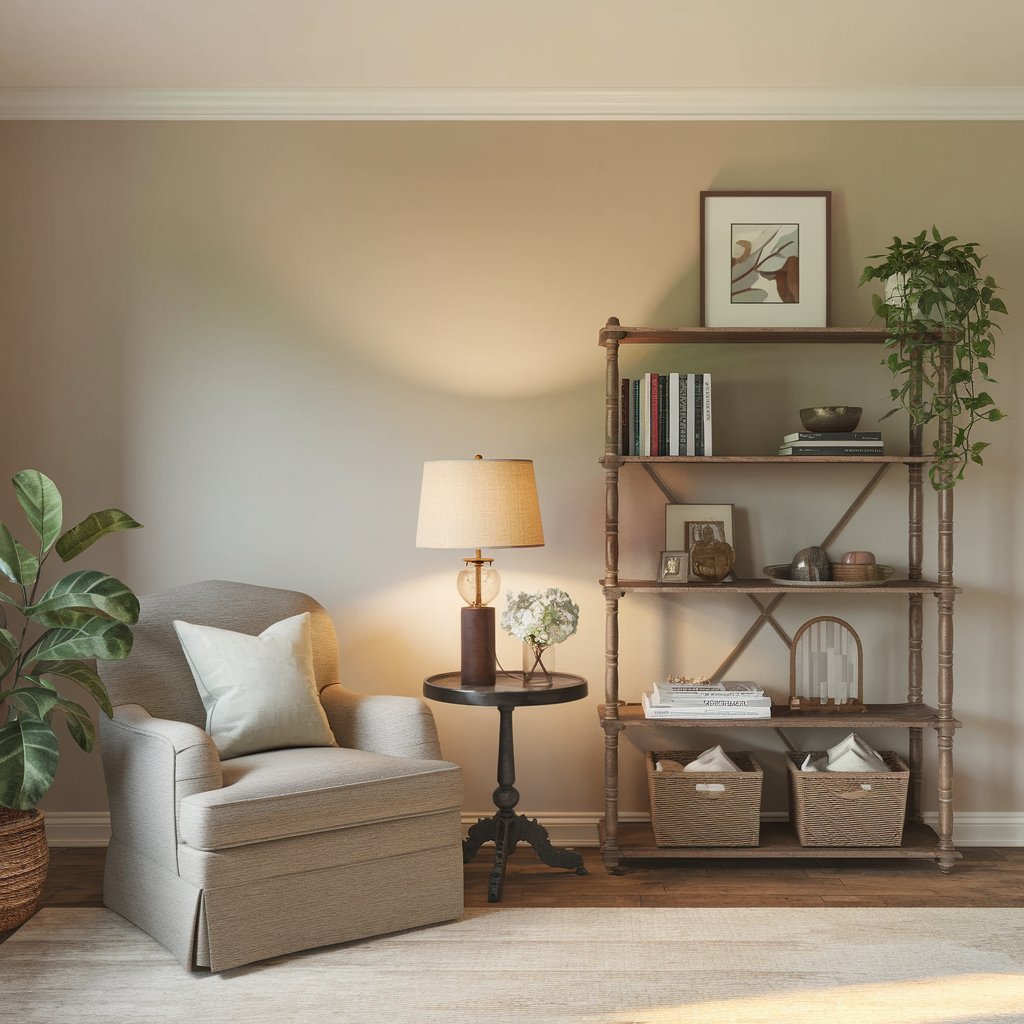
5. Create Comfort Zones
Every relaxing space needs cozy nooks. Here’s how to create them without spending much:
- Pillow Rotation: Switch pillows between rooms for a fresh look
- DIY Floor Cushions: Stuff old blankets into homemade covers
- Reading Corners: Rearrange furniture to create intimate spaces
- Texture Layering: Mix existing textiles for depth
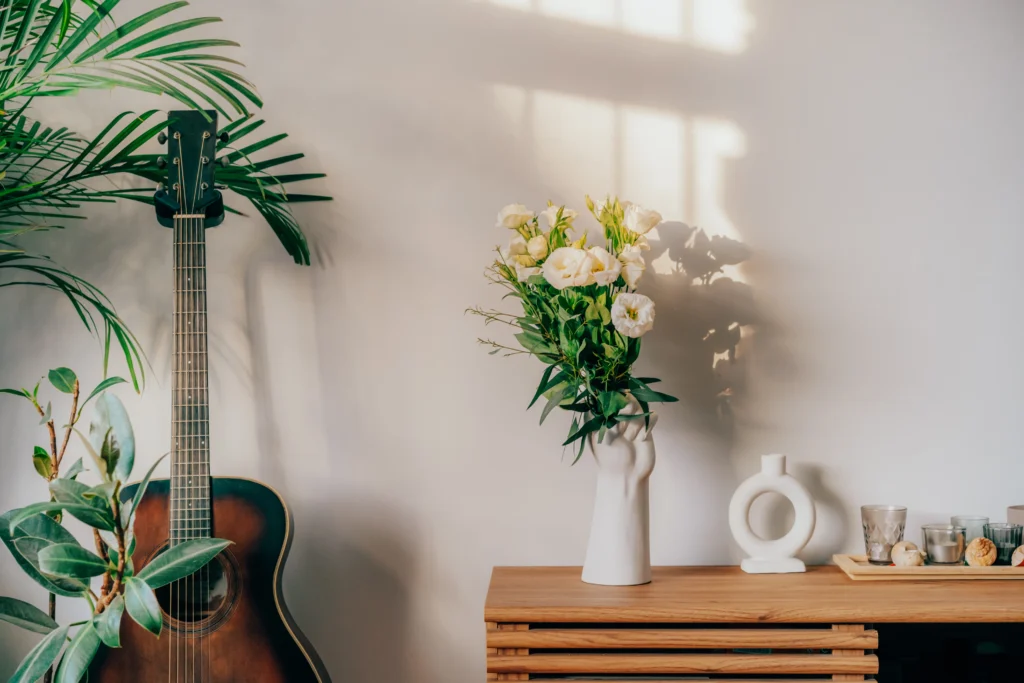
6. Use Color Psychology
Color has a profound impact on mood. Update your space using these budget-friendly color strategies:
- Paint sample pots for small accent walls
- Swap out affordable accessories in calming colors
- Use nature-inspired colors through plants and natural materials
- Create cohesive color schemes with existing items
For more stress-relief ideas, check out our guide to 10 Budget-Friendly Self-Care Practices.
7. Incorporate Calming Scents
Aromatherapy doesn’t require expensive diffusers. Try these affordable alternatives:
- Natural Room Sprays: Mix essential oils with water
- Stovetop Potpourri: Simmer citrus peels and herbs
- DIY Sachets: Fill old socks with dried lavender
- Natural Air Purifiers: Place bowls of baking soda around your space
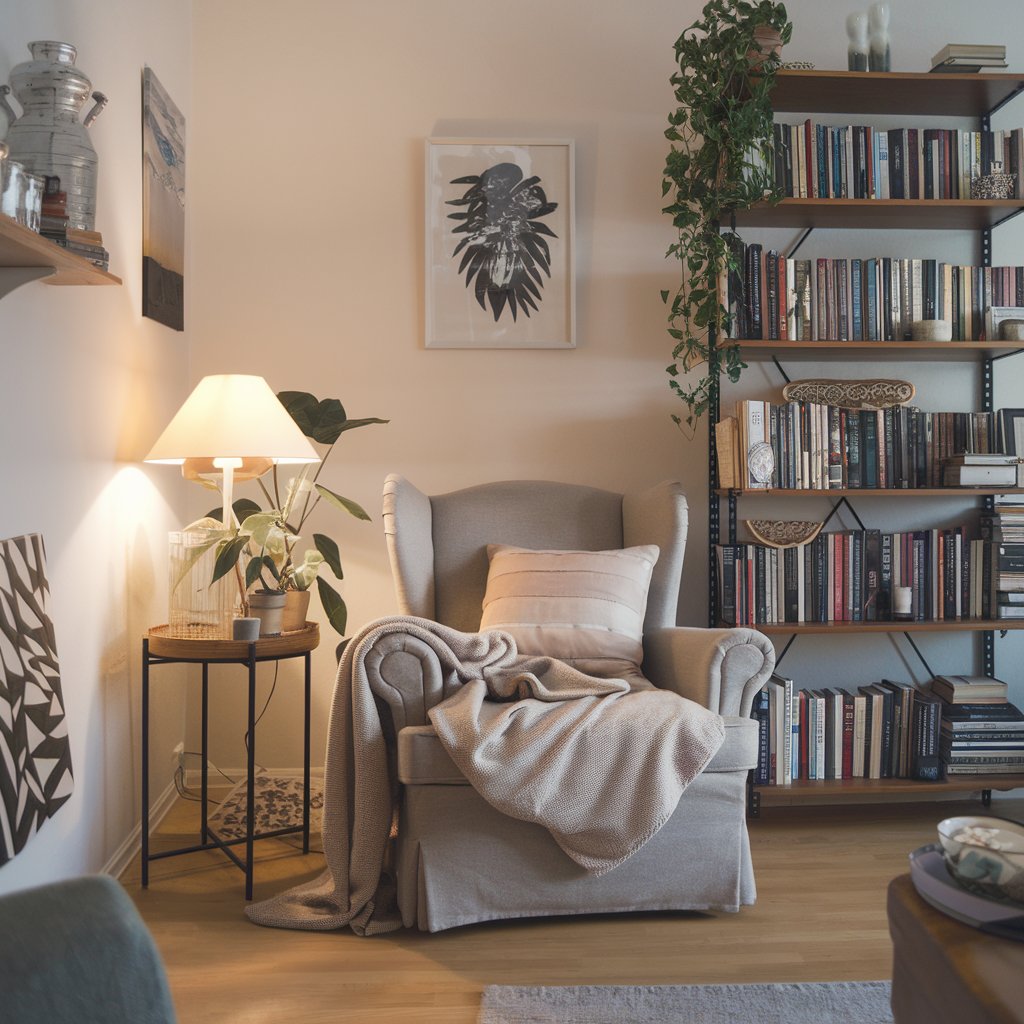
8. Sound Management
Create a peaceful soundscape without expensive sound systems:
- DIY Water Features: Create simple fountains from upcycled materials
- Strategic Furniture Placement: Arrange pieces to absorb sound
- Natural White Noise: Open windows at optimal times
- Soft Furnishings: Add textiles to reduce echo
For more mindfulness practices, explore 7 Steps to Cultivate Mindfulness Without Spending a Dime.
The Impact on Your Well-being
Creating a relaxing home environment isn’t just about aesthetics – it’s an investment in your mental health. Research shows that a calming home environment can:
| Benefit | Impact |
| Stress Reduction | Up to 60% decrease in cortisol levels |
| Sleep Quality | 23% improvement in sleep efficiency |
| Productivity | 15% increase in focus and concentration |
| Mental Clarity | 40% reduction in mental fatigue |
Conclusion
Remember, creating a relaxing home environment isn’t about perfection – it’s about intentionality. Start with one area, implement these budget-friendly changes gradually, and watch as your space transforms into a personal sanctuary. The best part? You’ll have money left over for the things that really matter.
Ready to take your relaxation journey further? Don’t miss our comprehensive guide on 10 Life-Changing Breathing Exercises.
FAQs
Q: How much should I budget for creating a relaxing home environment?
A: You can start with as little as $50-100, focusing first on decluttering (free) and making small, high-impact changes like adding plants or updating lighting.
Q: What’s the quickest way to make my home more relaxing?
A: Decluttering and organizing your space is the fastest, most cost-effective way to create a more peaceful environment.
Q: How can I maintain a relaxing environment with kids/pets?
A: Focus on creating designated zones, using sturdy, washable materials, and implementing simple storage solutions that make cleanup easy.
Q: What colors are most relaxing for a home?
A: Soft, natural colors like sage green, pale blue, warm beige, and gentle grays are known for their calming effects.


